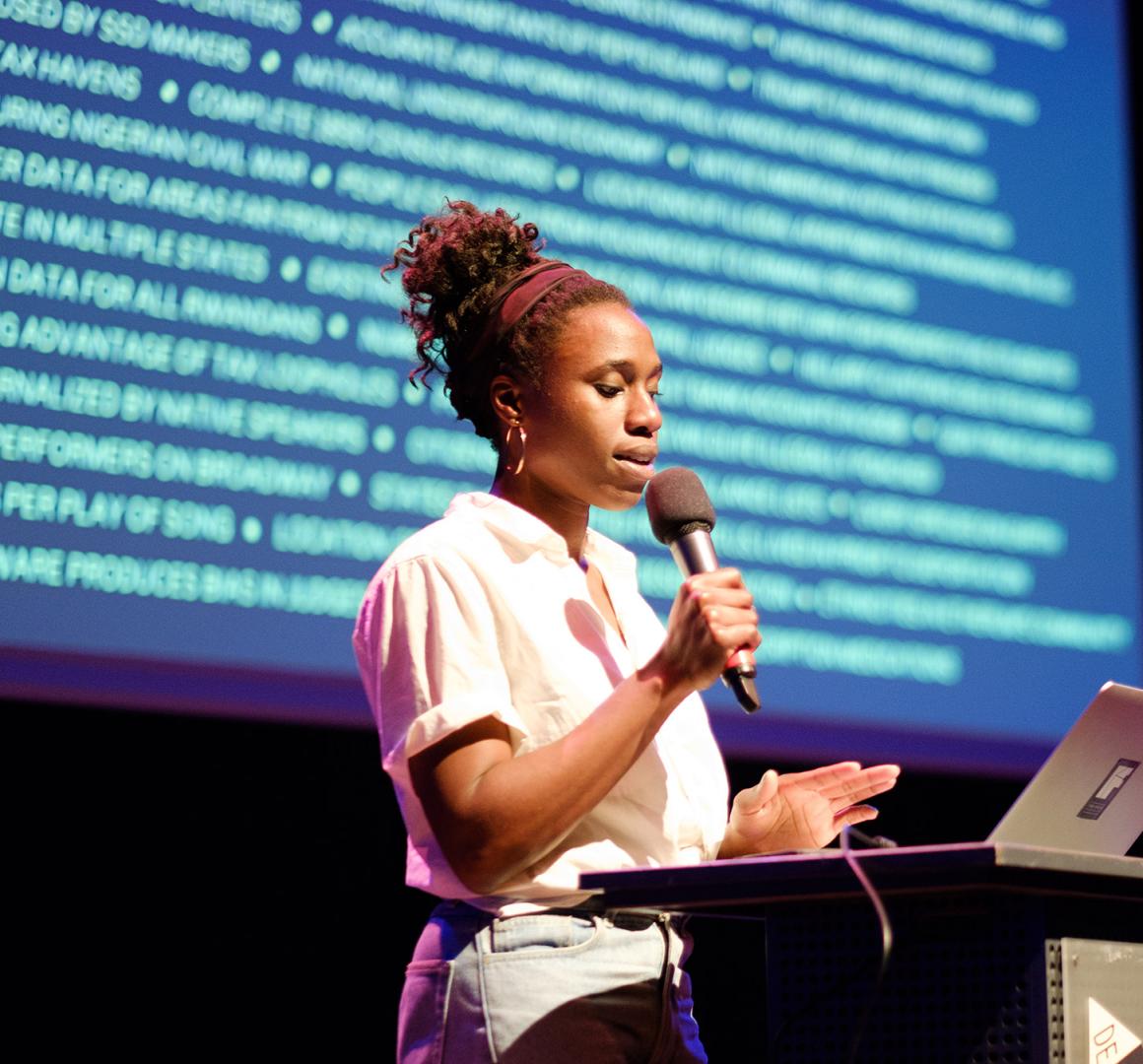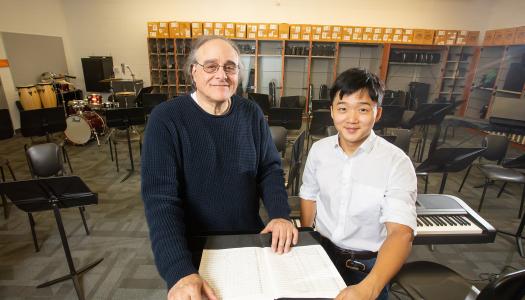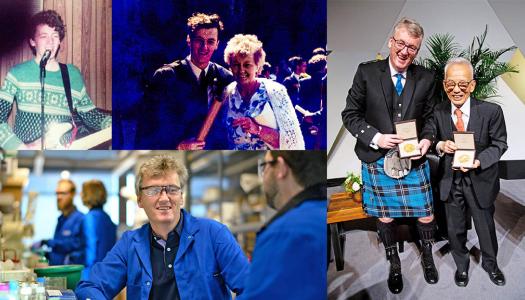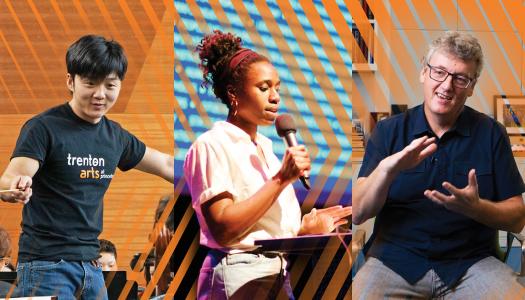Making audacious bets on the future of technology: Media artist Mimi Onuoha ’11 shines a light into the invisible margins of data
In her first year at Princeton in 2007, Mimi Onuoha ’11 could feel the ground shifting beneath her feet as shockwaves of new technology reshaped campus interactions. Students explored parallel social lives on Facebook, which had been introduced to the general public in 2006, and Steve Jobs launched the iPhone near the end of her first semester.
“It was a time when all of us were still figuring out the rules, like, ‘If you are Facebook friends with somebody, are you allowed or obliged to say something to them in real life?’” Onuoha said. “When some new technology comes out, society gets a small window of time to define our cultural values around it, what is permitted and what is not.”
Onuoha’s awareness of these cultural shifts was intensified when she lost her smartphone during her first year on campus and was forced to live without it for two months. “I remember floating through this period where I just didn’t have a phone and no one could reach me,” she said. “And loving it! Truly loving being removed from minute-to-minute communication so that I still had that experience of spontaneously bumping into people. And I really remember being a young person at a time when all this was happening, realizing that rules and definitions around this technology are going to quickly crystallize and harden, and that future generations wouldn’t even realize that this was ever a contested thing.”
Today, as a media artist and researcher whose work examines the effects of technology on culture and behavior, Onuoha is fascinated by the constant conversion of lives and lived experiences into data sets and how that information is represented — or misrepresented. Using print, code, data, video, installations and archival media, Onuoha makes art that draws special attention to those things that are difficult to see, count or collect. “What are the things that we just assume, that we don’t question, or that seem invisible-ized?” Onuoha said. “We are so biased to the things that we can quantify, so one of the hardest things you can do in the world is to get someone to think differently about something they thought they knew. That realization of, ‘The world was fixed to me, and now it’s wide open,’ can be a powerful moment.”
THE IN-BETWEEN
The daughter of Nigerian immigrants who settled in Houston, Texas, Onuoha grew up navigating different cultures. “I think people who grew up in between worlds are very keen on identifying structures and categories,” she said. “If you don’t quite feel like you fit in it, then you really notice the borders and boundaries, so I was already primed to notice what fits and what doesn’t.”
Princeton University was another “in-between” experience, but one that helped her blossom. “I think one of the strongest things about Princeton is its ability to bring together all different types of people,” she said. “Princeton definitely really made me understand the world in a way that I didn’t even realize I didn’t know before I attended.”
Onuoha studied anthropology, but she was fascinated by those first pulses of social media technology. She pitched two potential theses to her advisor, the late Isabelle Clark-Decès. One was a more traditional anthropology topic about gender performance in public spaces. The other was more unconventional, examining how people were responding to the deaths of loved ones on Facebook and expressing grief online in a way that the culture had never witnessed before.
“I was lucky enough to have a professor who said, ‘Yes! Do that one! No one’s going to understand what you’re talking about, but that subject is interesting and important and that’s what you have to chase,’” Onuoha said. “She was wonderful, and that was something Princeton gave me: people who were extremely thoughtful, insightful and willing to engage with me. That’s what I’m most grateful for, because if not for that, I don’t think I’d be on this path.”
Though her most exciting academic experience delved into social media and emerging technologies, Onuoha had not specialized in computer science. Realizing that coding would be essential to the future she was still formulating, she researched graduate programs that taught coding and enrolled at New York University, ultimately receiving a master of professional studies degree.
In 2014, Onuoha was selected as one of five inaugural Fulbright-National Geographic Digital Storytelling fellows, and she spent nine months in London on an independent project that combined her increasingly intertwined passions for technology, culture and art. “I managed to get my project published on the National Geographic website through pure determination and grit, and I remember thinking, ‘Okay, I can do this. I can put together a finished piece, and I can tell you what’s interesting about it,’” she said. “That piece was digital storytelling, and it would take me a longer time for me to call myself an artist. Almost like stacking Legos in place, I needed to build them high enough before I could say, ‘I am an artist.’”
THE HOUSE WE ALL LIVE IN
To understand Onuoha’s work, it helps to know the writings of Ursula Franklin, the 20th century scientist, author and educator who gave a series of 1989 lectures that became her book, “The Real World of Technology.” The foundation of her lecture is the line, “Technology has built the house in which we all live; the house is continually being extended and remodeled,” and Onuoha cites it frequently.
“Thinking about tech on its own is not so interesting, but what is interesting is how all of these huge spaces that mean so much to us are mediated by different forms of technology, whether we like it or not,” Onuoha said. “And I think in a lot of my work, I’m focused on how we are still constructing this house. We get to decide. How can we do it differently? What can we unbury? What has been pushed away? Or hidden? What can we bring back that can help us? I think those kinds of questions are really at the core of the work I do.”
Since returning from the Fulbright experience in London, Onuoha has sharpened her focus on the social relationships and power dynamics behind data collection and the sometimes contradictory logic that governs those technological processes. In 2016, she began a mixed-media installation titled “The Library of Missing Datasets,” drawing attention to the blank spots that data is programmed to overlook. Is information really “missing,” or is it simply ignored? “That which we ignore reveals more than what we give our attention to,” she wrote at the time. “It’s in these things that we find cultural and colloquial hints of what is deemed important. Spots that we’ve left blank reveal our hidden social biases and indifferences.”
For a recent project titled, “Natural: or Where Are We Allowed To Be,” she posed her friend and fellow artist Tinuade Oyelowo in a data center for a trio of photographs. Onuoha was inspired by British Caribbean photographer Ingrid Pollard, whose 1988 collection “Pastoral Interludes” contrasted photos of Black Britons in idyllic countryside settings with captions that punctured that illusion.
“Basically, Pollard was saying that Black people are not presumed to be able to be here, even though our labor helped make this possible,” Onuoha said. “My series became a way to make sense of all the datasets that were coming out about Black suffering in the summer of 2020 by questioning who actually owns those datasets and is able to define the terms of how they’re used. By placing my friend in the server room, where almost certainly her and my data is stored, it’s a way of thinking about that question of ‘Where are you meant to be?’ and who has access to those places.”
In 2021, Onuoha, who co-founded A People’s Guide to Tech, an organization that makes educational guides and workshops about emerging technology, and has taught as a visiting professor at NYU’s Tisch School of the Arts and other universities, returned to Princeton as the Ida B. Wells Just Data Lab Inaugural Artist-in-Residence. While working with Princeton undergraduates, she also produced a short film, “These Networks in Our Skin,” that brought together her Nigerian roots, the inspiration of James Baldwin and her mistrust of algorithms by documenting four women as they rewire the internet cables that transport information and connect the world.
“I agree with James Baldwin, who says: ‘Every society is really governed by hidden laws, unspoken but profound assumptions on the part of the people, and ours is no exception. It is up to the artist to find out what these laws and assumptions are,’” Onuoha said. “I’m just trying to point out these hidden laws and assumptions so that we can touch them or feel them. Because only then can we call attention to these sites where computational technologies have refigured or extended the existing systems of labor and capital control.”
VISIBILE-IZED
For Onuoha, the ground seemed to shift again in 2018. That year, the Fort Bend Independent School District near where she grew up in Houston broke ground on a new building and discovered the unmarked buried remains of 95 Black people who died between 1879 and 1909. Subsequent exhumation and analysis shed light on the once widespread practice of convict leasing, in which states provided cheap labor to plantation owners following the Civil War and the abolition of slavery.
“It was the next evolution of slavery,” Onuoha said. “Convicts would be leased in bulk, and if something happened to one, the plantations could just pick up another one. So there was an incentive for the states to pass laws that criminalized everyday activity — like loitering — and then enforced it discriminately on certain folks so they could be fed through this system.”
Those bodies, known as the Sugar Land 95, became undeniable evidence of a cruelty that had long been hidden. “I was captivated by the discovery because it was right near where I grew up, and because they found the bodies only because they had decided to build there,” Onuoha said. “I started thinking, ‘I bet there are more places like this.’ And there might be a way for machine learning to actually predict where other mass graves like this are.”
Onuoha has spent the last two years on “Ground Truth,” partnering with a team of statisticians at the Human Rights Data Analysis Group to create a mathematically precise model of where other convict leasing victims might be found. Using the data skills and tools she has mastered in the last 15 years, her team is creating a model that will scan demographics, census data, industrial and agricultural histories, racial violence statistics and other predictor variables. By comparing data from counties with known convict leasing cemeteries to other comparable counties, the model will pick up patterns that indicate the possibility of other unmarked mass graves.
“It will tell us the counties that are likely to have these graves,” she said. “It’s a mix of certainty and uncertainty; these results can tell us everything and nothing. But using these tools allows us to think about how we consider history, the places where we live and our relationships to them.”
For Onuoha, “Ground Truth” is the convergence of many of the themes from her previous work. The Sugar Land 95 are no longer difficult to see or count, but they represent a history that had long been airbrushed from existence. “The point of this is actually to think about this epistemological question: How do you know what you know is true?” Onouha said. “What counts? How are we able to talk about such things? What gets in the way of that? For me, the art isn’t just the output, but the way that we get there.”
The Venture Forward campaign, which launched in October 2021, supports the University’s strategic framework, and its fundraising and engagement initiatives are aligned with the key focus areas of that plan: college access and affordability, financial aid, data science, bioengineering, the environment, American Studies, and other important areas of inquiry that characterize Princeton’s commitment to the liberal arts.



